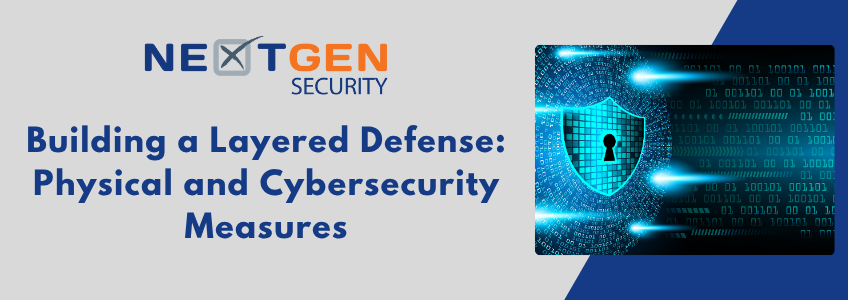As a full-service security integration company, NextGen prides itself on always adhering to physical and cyber security best practices. Our expertise is relied on to safeguard clients’ people, property, and assets. Here we provide a brief overview of some of the best practices that ensure a solid and layered defense against security threats and breaches.
Start at the beginning. A risk assessment will bring to light any existing and potential physical security risks and vulnerabilities related to your operation. Once identified, strategies to mitigate them can be implemented. These typically include the need to upgrade locks, improve video surveillance, or revisit access control policies and procedures.
Access control systems are a key layer in a comprehensive security strategy; they regulate who can – and cannot – enter your premises and specific areas within it. Credentials used span keycards, biometric scanners, and PIN codes which don’t only enhance security but also can track and keep an audit trail of who enters and exits. Credential permissions should be kept current to stay in step with personnel changes and prevent unauthorized access. In addition, alarm systems equipped with motion detectors, glass break sensors, and door/window contacts can quickly alert you to unauthorized entry. NextGen is here to help you implement an access control and alarm system solution ideally tailored to your specific needs.
A comprehensive video surveillance system coupled with 24/7 monitoring provides complete coverage and protection of your facility, from entrances, exits, and high-value zones. We install and regularly maintain high-quality video surveillance cameras to ensure protection and prevent downtime. Integrating these various systems with a trusted and professional monitoring service gives you peace of mind that there will be a prompt response, minimizing any potential damage and loss.
Securing a facility is not a one and done – systems need to be tested and maintained regularly to avoid the incidence of false alarms or, worse, risk that a malfunctioning system might fail to detect an actual breach.
Not to be overlooked in a comprehensive security strategy is the importance of proper lighting. Dark areas should be protected with well-positioned lighting, particularly motion-activated lights. They’re especially effective as they draw attention to any movement, startling potential intruders and signaling activity to anyone nearby. Good lighting not only aids in security but also provides employees and visitors with a clear path, reducing the risk of accidents.
NextGen is a strong proponent of emergency response plans that detail specific actions to be taken in response to varying scenarios. This ensures that everyone has a clear understanding of their role and responsibilities. An effective emergency response plan should include evacuation routes, communication protocols, and coordination with emergency services.
In terms of cyber security best practices, an essential component of effective cybersecurity is a security information and event management (SIEM) solution. As defined by Microsoft, “These types of solutions collect, aggregate, and analyze large volumes of data from organization-wide applications, devices, servers, and users in real time. By consolidating this vast array of data into a single, unified platform, SIEM solutions provide a comprehensive view of an organization’s security posture, empowering security operation center to detect, investigate, and respond to security incidents swiftly and effectively.”
In today’s high-risk environment, Zero Trust architecture is also especially important. Zero Trust is a security model that assumes breach and verifies each request as though it originated from an uncontrolled network. This approach is becoming essential in today’s environment where organizations need to pivot to the complexity of modern computing, adapt to an increasing mobile workforce, and protect people, devices, applications, and data.

